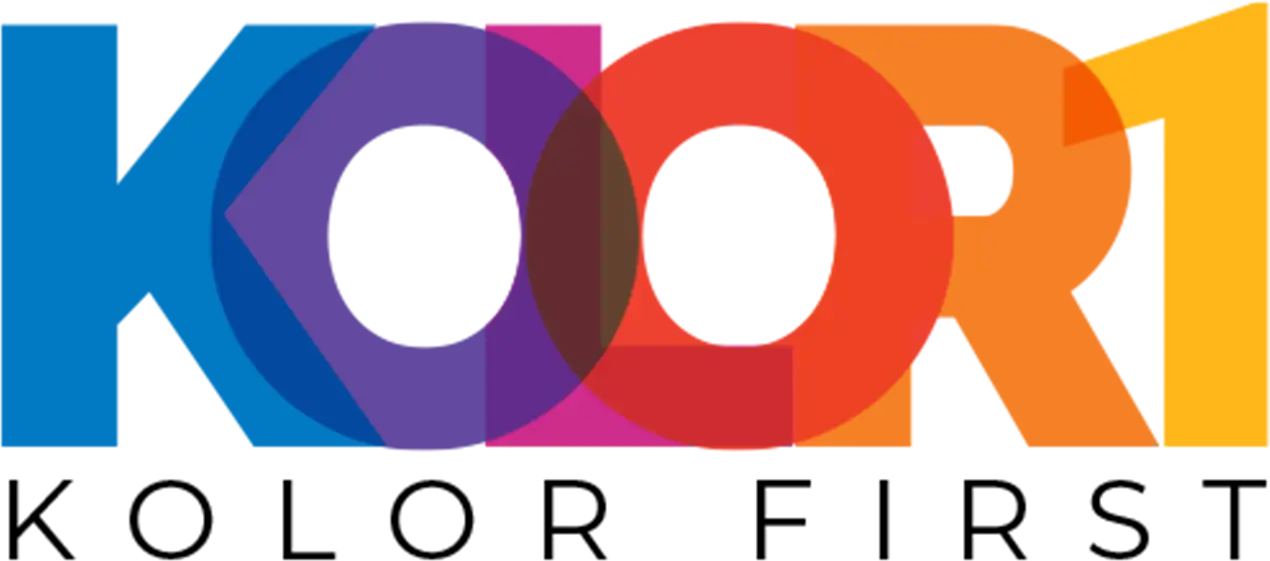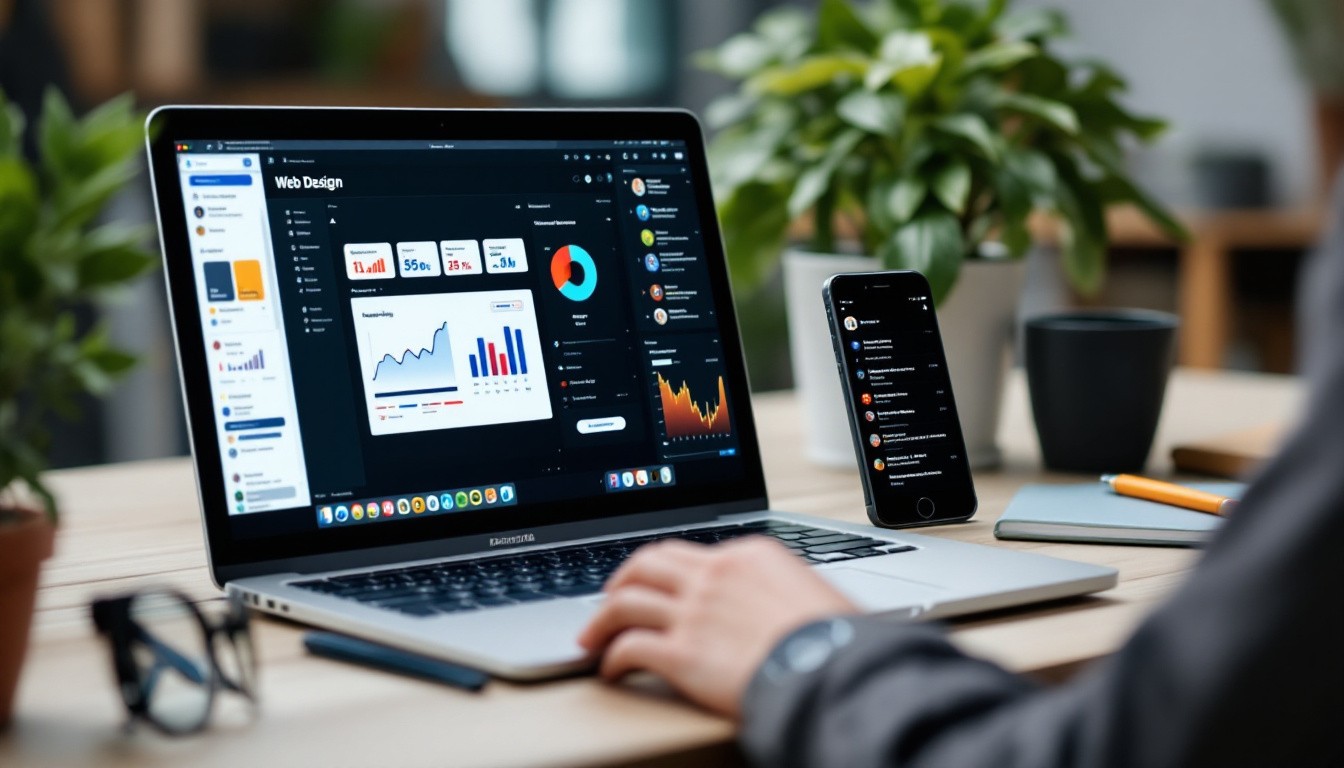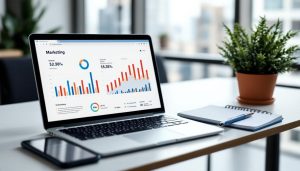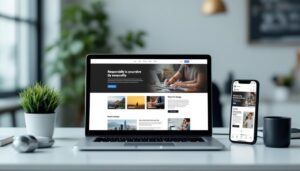Most businesses treat web design and marketing as separate functions. This approach leaves money on the table.
We at Kolorfirst LLC see companies increase conversions by 40% when they align design decisions with marketing goals. The right visual elements guide users through your sales funnel and turn visitors into customers.
Why Design Choices Control Your Revenue
Visual design directly controls user behavior through psychological triggers that most businesses ignore. Stanford research shows users form opinions about website credibility within 50 milliseconds of arrival on a page. Colors influence purchase decisions by 62% to 90% according to studies from the Institute for Color Research. Red creates urgency and drives immediate action, while blue builds trust for financial services. Amazon increased conversions by 11% when they changed their call-to-action button from orange to yellow.
The Psychology Behind User Actions
Users follow predictable patterns when they scan websites. Eye-tracking studies reveal the F-pattern reading behavior where visitors focus on the top and left portions of pages. Smart designers place conversion elements in these high-attention zones. Netflix positions their sign-up button in the top-left corner because data shows 69% higher click-through rates in this location. White space increases comprehension by 20% and guides users toward desired actions without overwhelming them.
How Experience Design Converts Visitors
User experience failures cost businesses millions in lost revenue. Walmart discovered that 100ms improvement in page load time increases conversions by 1.11%. Mobile users abandon sites 53% faster than desktop users when pages load slowly (according to Google data). Clear navigation paths increase conversions by 35% because confused users leave immediately. Companies like Dropbox simplified their homepage to focus on one primary action and saw conversion rates jump from 2.8% to 10.3%.
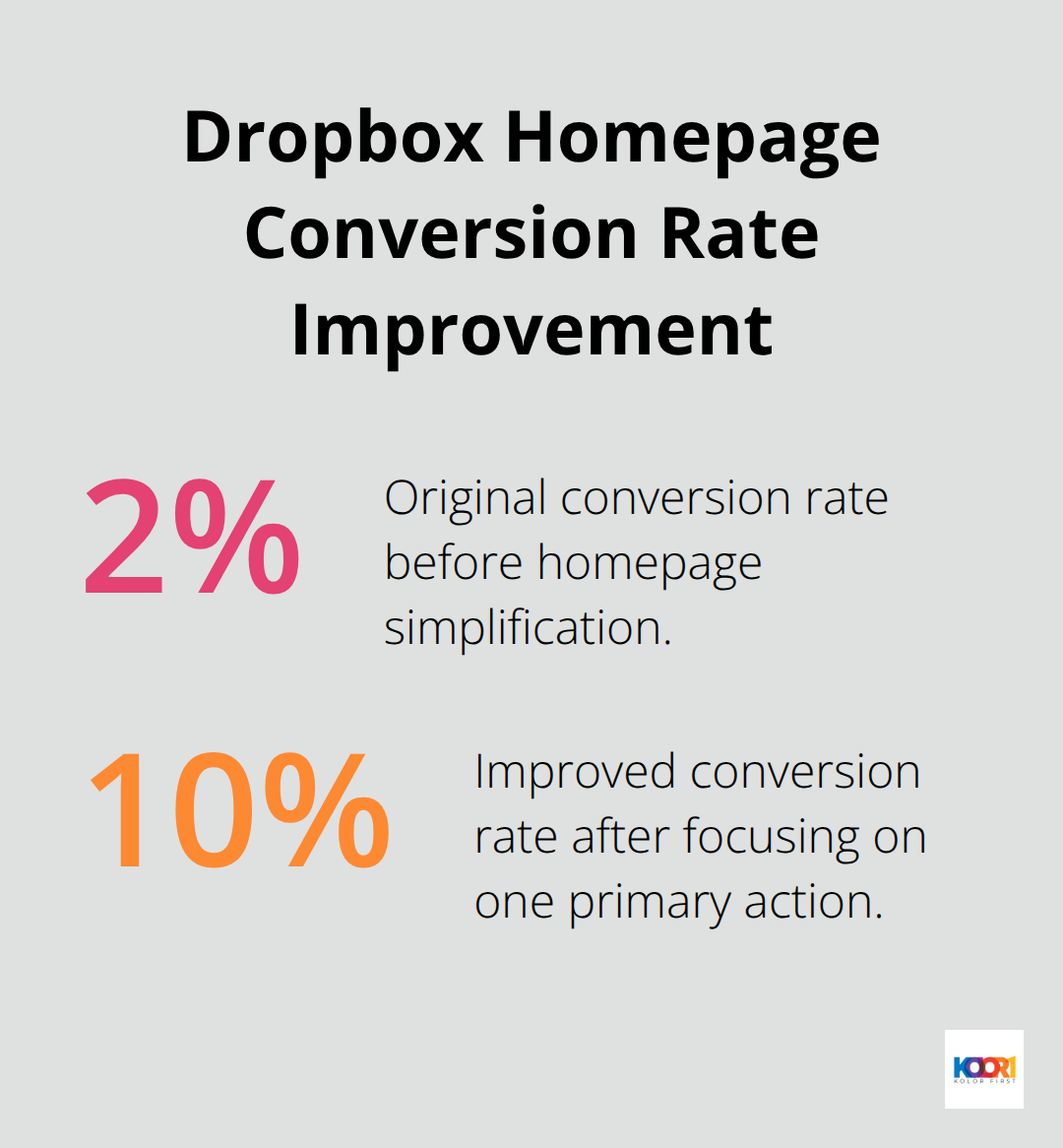
Strategic Elements That Drive Revenue
Color psychology works because it taps into subconscious decision-making processes. Orange buttons generate 32% more clicks than red buttons in e-commerce settings. Typography affects trust levels – serif fonts increase perceived credibility by 28% for financial content. Visual hierarchy guides attention through size, contrast, and placement. Users spend 80% of their time looking at information above the fold, which makes header design critical for conversions.
These psychological principles form the foundation for strategic design decisions. The next step involves implementing modern web design techniques that maximize your marketing performance across every touchpoint.
Essential Design Elements That Boost Marketing Performance
Strategic color choices directly impact revenue generation beyond simple aesthetics. Making CTA buttons larger and darker can significantly boost performance, while Facebook’s blue color scheme increases user trust by 15% (University of Winnipeg research). Companies with consistent brand colors across all touchpoints see revenue increases of 23% according to Lucidpress data. Your primary brand colors should appear in headers, buttons, and key conversion points to create visual pathways that guide users toward purchases.
Strategic Color Psychology and Brand Consistency
Color psychology taps into subconscious decision patterns that drive purchase behavior. Orange buttons generate 32% more clicks than red buttons in e-commerce environments, while blue builds trust for financial services. Netflix uses red strategically throughout their interface because it creates urgency and drives immediate subscription actions. Brand consistency reinforces recognition – users need to see your brand colors 5-7 times before they remember your company. Visual consistency across platforms builds the trust that converts browsers into buyers.
Navigation Structure That Guides Users to Conversion Points
Navigation architecture determines whether visitors convert or abandon your site within seconds. Clear menu structures with logical categories reduce bounce rates by 42% (Nielsen Norman Group studies). Horizontal navigation menus perform 18% better than vertical menus for e-commerce conversions because users scan left-to-right naturally. Breadcrumb navigation increases conversions by 12% by showing users their location and providing easy backtracking options. Top navigation generates 23% more clicks than sidebar navigation because users expect important elements at the top of pages.
Mobile-First Design for Maximum Reach and Engagement
Mobile traffic accounts for almost 59% of global web traffic, which makes mobile optimization essential for revenue growth.
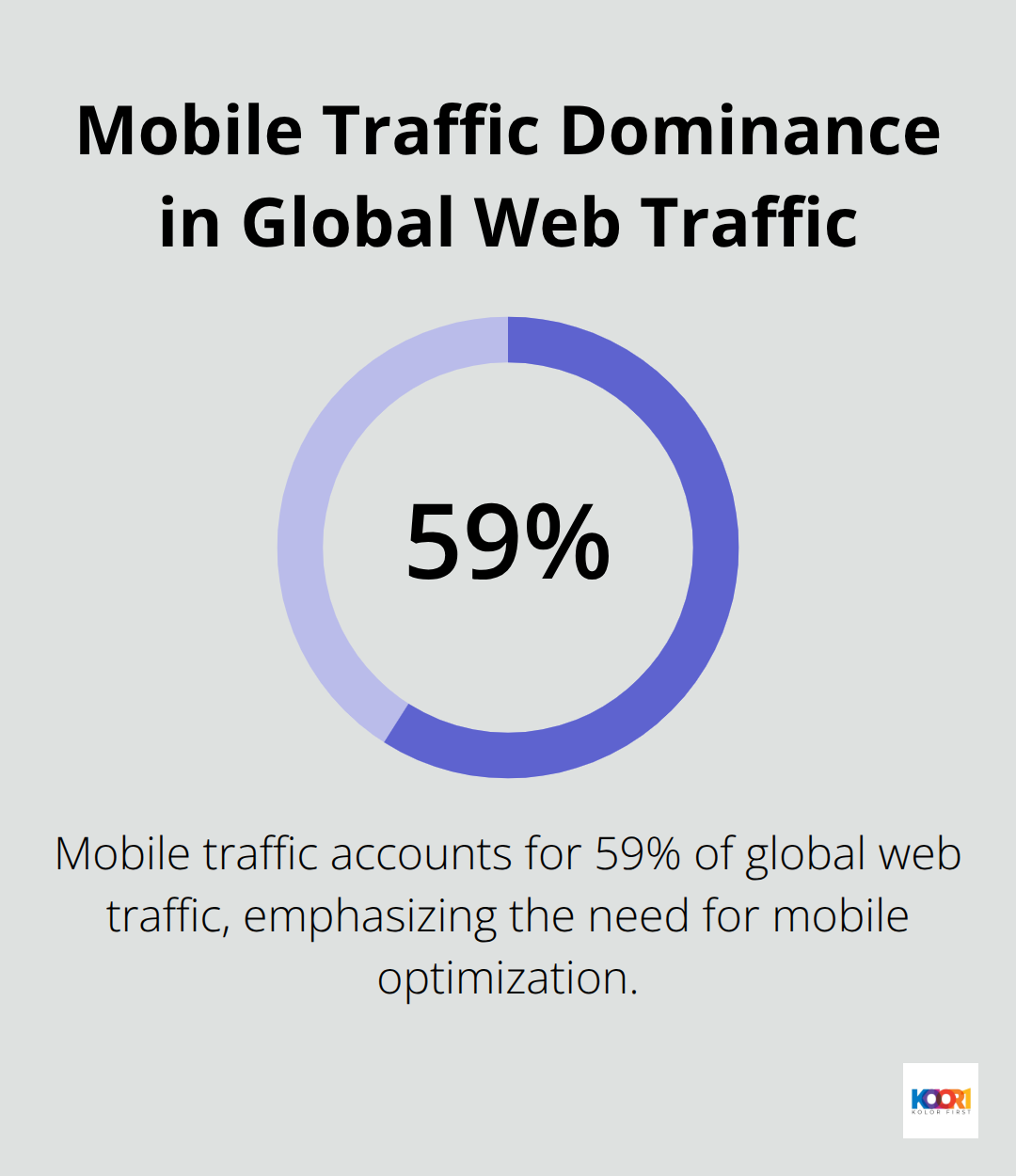
Google research shows that 61% of users will not return to a mobile site they had trouble accessing, while 40% will visit a competitor’s site instead. Touch targets must be at least 44 pixels to prevent user frustration and accidental clicks that damage conversion rates. Single-column layouts increase mobile conversions by 67% compared to multi-column designs because they eliminate horizontal scrolling.
These design fundamentals create the foundation for high-converting websites. The next step involves implementing specific optimization techniques that transform your design elements into powerful marketing tools.
Marketing-Focused Design Strategies for Better Results
Landing page optimization generates measurable revenue when you focus on specific psychological triggers rather than generic best practices. The average conversion rate for landing pages is around 6.6% across all industries as of Q4 2024. Research reveals that two out of three marketers report their average landing page conversion rate is less than 10%. Headlines must communicate value within 5 seconds because users decide to stay or leave that quickly. Navigation menu removal from landing pages increases conversions by 100% because it eliminates distractions that pull users away from your primary goal.
Landing Page Elements That Convert Visitors
Single-purpose pages outperform multi-objective pages because they eliminate decision paralysis. Above-the-fold content captures 80% of user attention, which makes headline placement critical for success. Social proof elements like testimonials increase conversions by 34% when placed near call-to-action buttons. Form fields should stay under 3 items because each additional field reduces completion rates by 11% (Unbounce studies). Trust signals such as security badges boost conversion rates by 42% for e-commerce transactions.
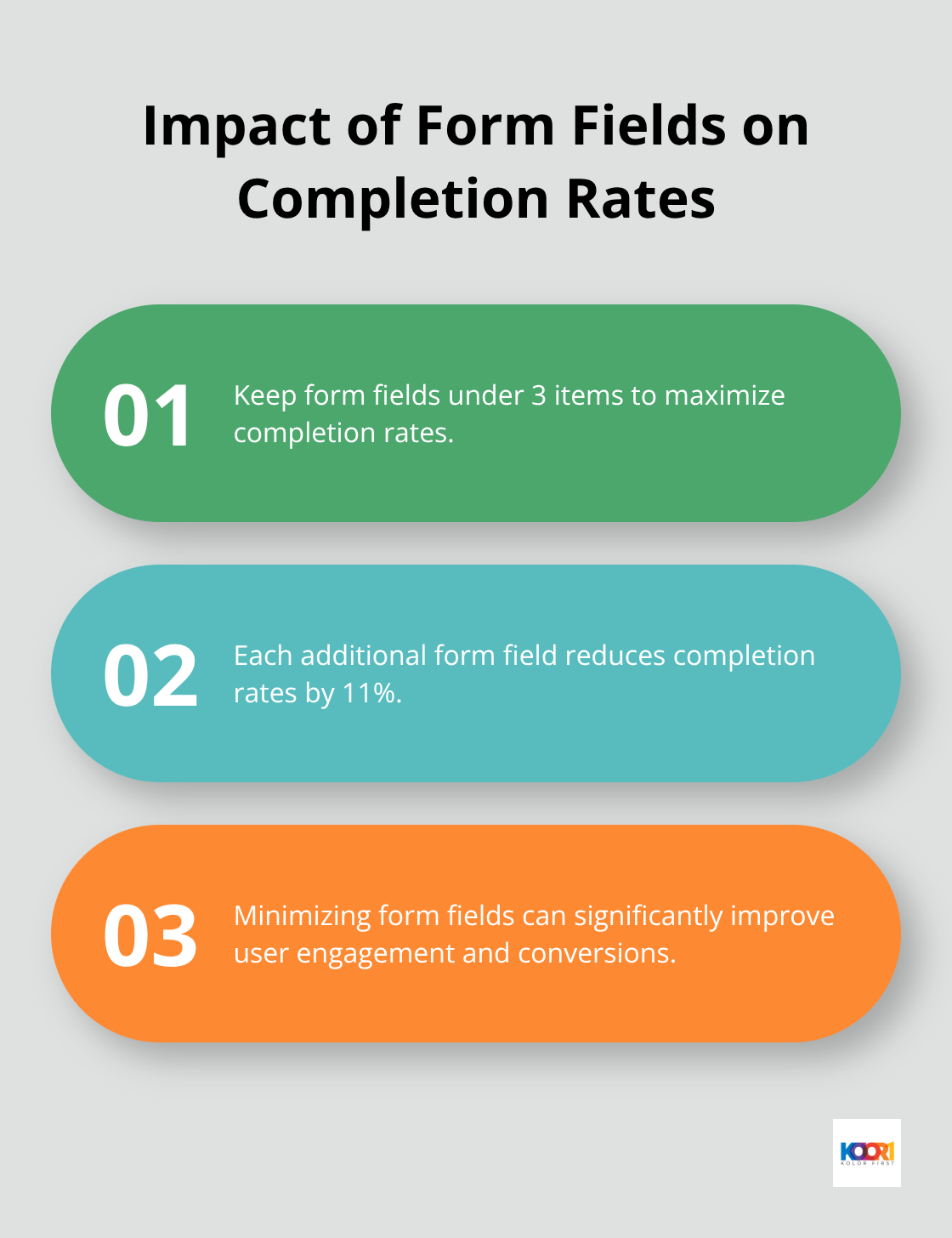
Strategic CTA Design That Drives Action
CTA buttons function as decision triggers that must stand out visually while creating urgency. Green buttons outperform red buttons by 21% in B2B environments according to HubSpot data. Button text like “Get My Free Guide” generates 31% more clicks than generic “Submit” buttons because it promises specific value. WordStream analysis shows that CTAs placed above the fold convert 73% better than those below the fold. The optimal CTA size measures 44×44 pixels for mobile devices to prevent accidental clicks that damage user experience.
A/B Testing Design Elements for Continuous Growth
A/B testing reveals which design changes actually increase revenue rather than just look better. ConversionXL studies show that headline variations can improve conversions by 127% within 30 days. Button color tests typically show 3-5% conversion improvements while page layout changes boost performance by 15-20%. Testing one element at a time provides reliable data because multiple changes make it impossible to identify what drives results. Companies that run systematic design tests see 30% higher conversion rates than those who make design decisions based on opinions rather than data.
Final Thoughts
Web design and marketing integration drives measurable business growth when you implement data-driven strategies rather than aesthetic preferences alone. Companies that align visual elements with conversion goals see 40% higher performance because every design choice becomes a strategic marketing decision. Start with an audit of your current website performance metrics to identify the biggest opportunities for improvement.
Focus on high-impact changes first: optimize your primary call-to-action buttons, simplify navigation paths, and implement mobile-first design principles. Test one element at a time to identify what actually drives revenue growth for your specific audience. Professional agencies accelerate results when they combine design expertise with marketing analytics (which most businesses lack internally).
We at Kolorfirst LLC specialize in brand identities and digital marketing solutions that transform websites into powerful conversion tools. Our UX consulting and creative branding services help businesses achieve measurable growth through strategic design decisions backed by real performance data. The most successful companies treat their websites as integrated marketing systems rather than digital brochures, which transforms every visual element into a revenue-generating asset.

